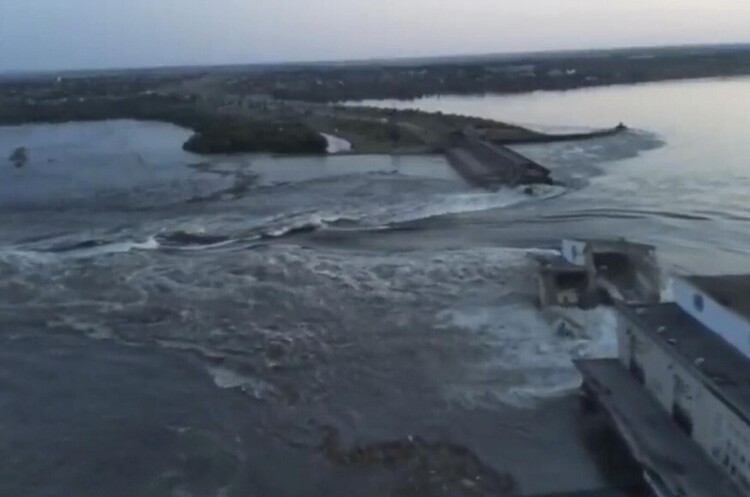Experts: Destruction of Kakhovka HPP caused by a powerful explosion from inside
Such consequences cannot be caused by external artillery shelling, they assure

The most likely cause of the destruction of the dam at the Kakhovka Hydroelectric Power Plant on the Dnipro was an explosion from the inside using a powerful charge.
Source. This was reported by The New York Times (NYT) with reference to engineering and blasting experts. The likelihood of water breaking through as a result of structural damage or shelling from the outside is much lower.
Ukraine claimed that russian forces controlling the hydroelectric power plant had mined it last October. On Tuesday, President Volodymyr Zelensky accused russia of mining and blowing up the hydroelectric power plant, of "detonating a bomb of massive environmental damage."
The sabotage was carried out by Ukraine to deprive Crimea of water and to hide the failed start of the offensive, Defense Minister Sergei Shoigu and kremlin spokesman Dmitry Peskov said. russian state media also attributed the dam breach to shelling by the Ukrainian Armed Forces.
Zelensky rejected the accusations of shelling, emphasizing that it was "physically unrealistic" to blow up the hydroelectric power plant in this way.
Experts interviewed by the NYT agree with him. According to them, the greatest damage is caused by an explosion in a closed room, all the energy of which is directed to the destruction of structures. But even in this case, hundreds of kilograms of explosives are needed to achieve the desired effect. The energy from an explosion of a bomb planted outside or from missile strikes is not enough – or much more explosives would be needed.
Most likely, the dam was blown up by russia, fearing a Ukrainian counteroffensive, military expert Pavel Luzin, a research fellow at the Fletcher School of Law and Diplomacy at Tufts University, told the Financial Times. This is a bulk dam made of compacted soil, so an explosion from the inside is necessary to destroy it, and it will hardly suffer from artillery shells, he explained.
russian troops spent the entire month of May trying to prevent a Ukrainian counteroffensive with constant rocket attacks, and "when that failed, they blew up the power plant," Luzin said.
Self-destruction is also highly unlikely, said Gregory Beecher, a professor at the University of Maryland and a member of the U.S. National Academy of Engineering who has studied the causes of dam breaks.
In May, water rose to the top of the Kakhovka dam and began to overflow, as seen on satellite images. However, when a dam collapses under excessive water pressure, it usually happens at the point where it connects to the shore, while in this case the breach occurred in the middle, next to the hydroelectric power plant, which is adjacent to the russian-occupied left bank, Beecher said.
High water levels and damage to the sluice gates could theoretically disrupt some of them, but it would not cause as much damage as in this case, he emphasized.
Background. As reported, the British military and intelligence services are investigating the cause of the destruction of the Kakhovka HPP. And Turkish President Erdogan proposes to create an international commission to investigate the explosion of the Kakhovka HPP.
If you have read this article to the end, we hope that means it was useful for you.
We work to ensure that our journalistic and analytical work is of high quality, and we strive to perform it as competently as possible. This also requires financial independence. Support us for only UAH 196 per month.
Become a Mind subscriber for just USD 5 per month and support the development of independent business journalism!
You can unsubscribe at any time in your LIQPAY account or by sending us an email: [email protected]



